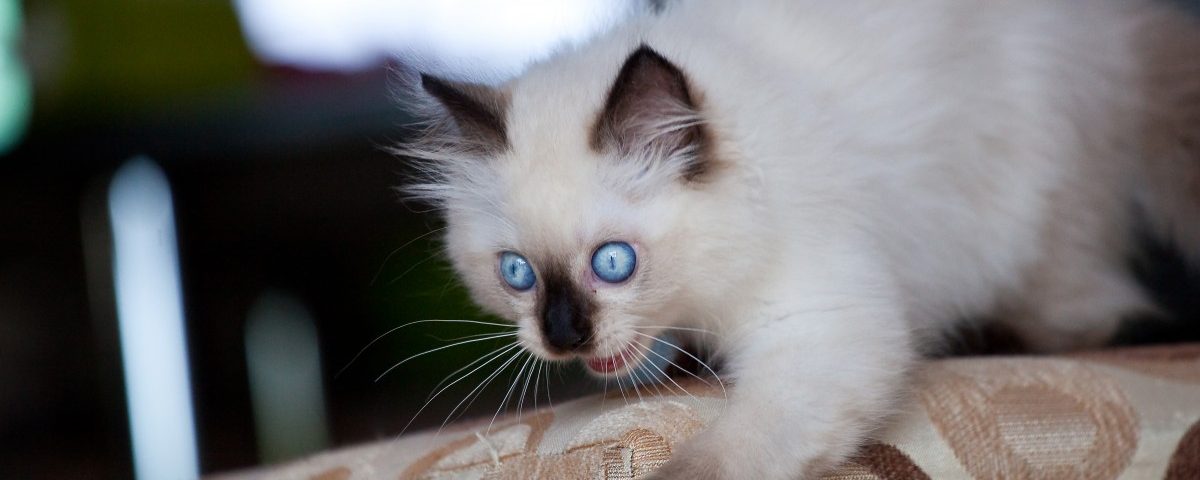
How To Fight Your Child’s Cold or Flu
May 3, 2024
Treat Pets Like A Human Passenger In Your Vehicle
May 17, 2024There is much joy and excitement when adopting a new kitten, yet inappropriate behaviour, including scratching, is the most common reason people give up their pets, with 18-30% of cats are no longer in their first home after the end of the initial year.
We are fascinated by these mysterious creatures and by increasing our understanding of feline behaviour we are able to enhance our enjoyment and affection for these animals. The modern domesticated cat, spends a majority of their time indoors; thus their environment should be enriched in such a way to curb unwanted behaviour. With a little help and training, you can be reassured that your kitty will not give your couch a feline makeover.
“To live in harmony with cats it is important to understand that although domesticated, they are still very much instinct-driven with traits that influence their actions. Where wild cats would hunt, domestic cats would play stalk-and-attack games. You will find that your fur-kid can easily get bored, aggressive or sleep the day away if they are spending most of their time alone and confined with limited interaction or entertainment,” says Stefanie Bosman.
All cats scratch and this natural, instinctive actions should not be discouraged. It is important to realise that this is not intended to be destructive.
Why cats scratch:
Cats are known for their grooming habit and there is a constant need to sharpen their claws and keep them in good condition by stripping off the old, flaky shell to reveal the new surface underneath;
- Vertical or horizontal scratching exercise the muscles of the forelimbs and spine. By stretching their entire body and by flexing their feet and claws they keep agile and fit;
- By scratching in front of other felines, cats communicate their dominance;
- Cats rub and scratch as a form of communication. Scent glands located on their cheeks and paws, transfers their scent and mark their territory; and
- Cats scratch when they are being playful.
How to deal with scratching
One way to deal with your cat scratching unwanted areas like furniture or curtains is to train your cat to focus on more appropriate alternatives, like a cat scratching post or tree. These days cat furniture is easily available to buy or you can make one yourself. Some cats prefer to scratch vertically, and others horizontally, but all prefer rough fabric, sisal rope, bark or wood posts.
“It is important to ensure that the selected cat tree is made from material that does not accidentally encourage unwanted behaviour. Avoid activity centres that make use of upholstery fabric or carpet used in other areas of your home décor, as this will send a mix message to your feline friend when they are attracted to the texture on your lounge suite or oriental rug,” adds Bosman.
Locating their scratching posts near their favourite spots, like where they sleep, eat, or a window sill with views of the outside world, will increase the use. Depending on space available scratching posts come in all shapes and sizes, some beautifully complex and measuring up to the ceiling.
Cats live in a vertical world and as a pet parent you should create an environment that offers elevated areas to inspire jumping and climbing to develop their co-ordination skills. They feel safer and display greater confidence when able to survey their territory from a raised perch or platform.
Humans, as well as animals, learn best through the use of reward, praise and positive reinforcement. If an experience is unpleasant, animals will try to avoid it in the future. The training process of making your cat’s scratching post fun, rewarding and exciting, also requires you to make furniture an unattractive clawing item. Cats don’t like the feel of aluminium foil or double sided sticky tape on their paws, so covering areas where you do not want your cat to claw should discourage scratching. Luckily, you don’t need to keep these unsightly accessories on your furniture forever – once your cat has found better places to play, like a cat tree, it will prefer their new playground over your favourite leather couch. A gentle deterrent such as spraying your cat with a little water from a squirt bottle could also be used as a reminder it that the human furniture is off limits.
The best results will come from praising and rewarding your cat for scratching and climbing its post. Around 75% of cats respond to catnip and using products made from this plant in and around the scratching post will also help to inspire your cat to use it. You can also hide or scatter treats on the vertical post to get your cat to climb and explore the cat tree. Once your cat understands that scratching and climbing its post is fun, offers reward and gains your passionate approval, it will be more inclined to enjoy and use its new playground.
“A cat tree or post is an essential item to ensure the happiness and well being of your cat. Ensure that your fur-kid has a safe haven where it can scratch, play or nap the day away without the worry of having to sacrifice your furniture along the way,” concludes Bosman.




